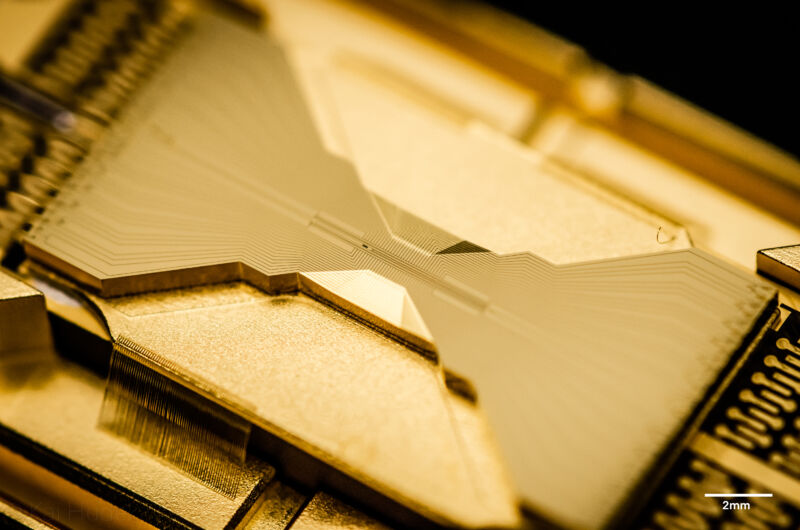Trapped-ion quantum computer sets new mark for quantum volume
Ars Technica » Scientific Method 2020-10-01

Enlarge / A look at one of the ion traps. (credit: IonQ)
On Thursday, the startup IonQ announced that the next generation of its ion-trap quantum computer was ready for use. The new machine marks a major jump for the company, going from 11 qubits up to 32. While this still trails the offerings of companies that are using superconducting qubits, the high fidelity of the trapped ions makes them far less prone to errors and far easier to link into complex configurations. So, by at least one measure of performance, this is the most powerful quantum computer yet made.
Perhaps more significantly, IonQ's CEO told Ars that it expects to be able to double the number of qubits every eight months for the next few years, meaning its hardware should consistently outperform classical computers within two years.
Trapping ions
IonQ isn't the only company that's working with trapped ions; Honeywell introduced a quantum computer based on the technology earlier this year. You can read that earlier coverage for more details, but we'll summarize the reasoning behind this technology here.